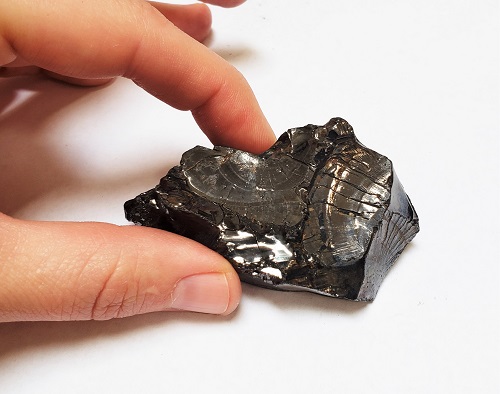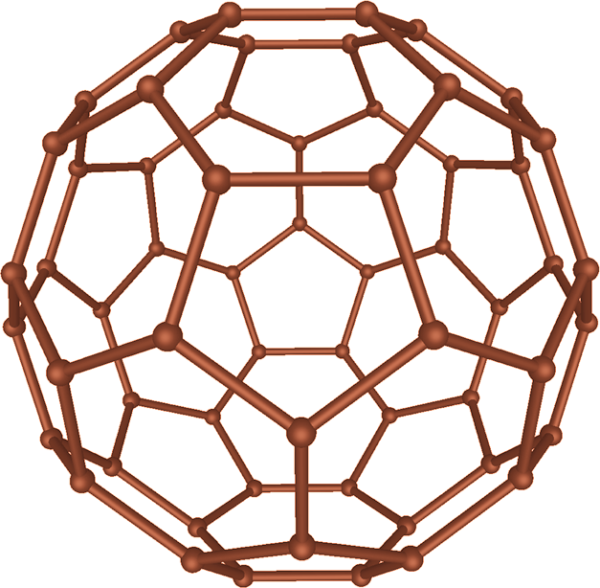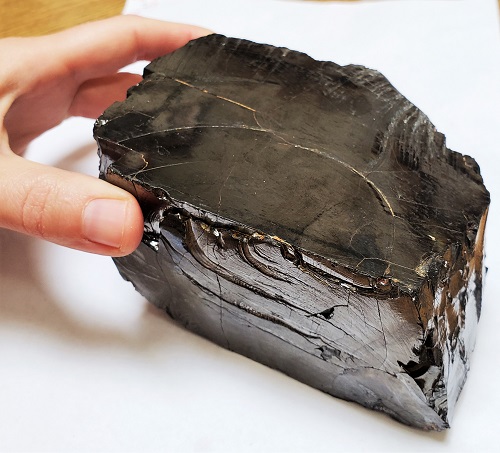Shungite is a very unusual, silver to black color “rock”. What’s inside is a molecular structure different than any other mineral we’ve found on Earth. It is composed mostly of carbon- key to Life as we know it. And we find it in only one small area out of this entire wondrous planet: Karelia, Russia.
Shungite was given its modern name around 1880, in association with a village near one of the first extraction sites, named Shung’ga. Known as “the stone of Life”, people in Russia have known about Shungite for a long time, and only more recently has this side of the world been hearing more about it. Word is spreading about it’s water-purifying capacities, EMF ‘correcting’ properties, antioxidant effects and other unique, sometimes peculiar characteristics.

There is so much we could share about Shungite. There is also a rabbit hole of so-called “facts” and information out there, sometimes contradicting, at times raising more questions than answers. Here we have compiled the basics, going into some depth, along with explanations and directions for how to use the wide variety of items we offer. Not all, but many references come from a book titled SHUNGITE – Protection, Healing, and Detoxification by Regina Martino. This unique read was specifically recommended to us by our Russian affiliates, Skyline Minerals. A little more about them toward the end of this article, along with lapidary information and tips from our cutting shop.
First, the Fullerenes
Shungite is mostly carbon, but does not display signs of crystallization like coal, graphite or diamond. Its molecules are arranged in a unique and clever way. It is thought to have formed from single-cell Life (as one strong theory), however it does not fall into a category of fossil fuels.

All the rage about Shungite is in its buckminsterfullerenes. A fullerene, for short, is the only thing we now know of that is composed entirely of carbon. A multitude of different types have been discovered, each distinguished by their number of carbon atoms. All fullerenes have atoms that are arranged in a lattice that can form either a ball (buckyballs) or tube shape (nanotubes). They are tiny, and measured in nanometers (one billionth of a meter, 0.000000001 or 10-9). The smallest stable fullerene of them all is C60 (pictured left), the same found in Shungite stone. Buckyballs (fullerenes) contain 60 carbon atoms that connect together and take on the same shape as a soccer ball.
What’s in the name

Buckminster Fuller (1895-1983), or “Bucky”, as he was lovingly called, was a teacher, author, architect, inventor, and originator of the “geodesic dome” structure. In the 1930’s he brought forth and popularized his rather futuristic buildings, vehicles for travel, and a myriad of other architectural proposals, all holding great potential and efficiency for not only the way humans live day-to-day, but for the betterment of the whole planet. The layout and structure of Bucky’s dome-shape buildings, with alternating hexagon and pentagons, have turned out to be an exact replica of fullerene C60 discovered in 1985! The researchers who discovered molecules C60 and C70 decided to nickname them buckyballs, or buckminsterfullerenes (“fullerene”, for short.)
In 1970 fullerenes first became a hypothesis, conjured by a man from Japan named Eiji Osawa. He first discovered football-shaped molecule C70, and from there was able to calculate that a round ball shape could also exist. In 1985, 5 men at Rice University, Texas were trying to figure out how carbon atoms like to cluster together. Amidst their experiments, lo and behold, two very unusual all-carbon molecules revealed themselves: C60 and C70. Before this discovery, crystalline carbon was thought to adopt only a handful of different molecular architectures, including those found in diamond and graphite. But because of a fullerene’s pattern and shape, it is not constrained to act like graphite or diamond (nor does it!).
In diamonds, molecules arrange themselves tetrahedrally. In graphite, the atoms are formed in sheets. And when these men looked closely at C60, they saw sheets arranged in a pattern of hexagons and pentagons, giving them the ability to curl up and close to form hollow cages. If that wasn’t fascinating enough, because the number of atoms in the cage can vary, an almost infinite number of fullerene shapes may exist! (C60 is the smallest stable fullerene we know of.) These observations defied a prevailing theory of the limits of the universe: that only light molecules composed of one to ten atoms could ever exist. At the end of the year in 1991, the fullerene was proclaimed “molecule of the year” by the AAAS journal Science and to be the most significant development in scientific research. By end of 1996, the Nobel Prize in chemistry was awarded to 3 of the 5 men: Robert F. Curl, Harold W. Kroto, and Richard E. Smalley. The following is an excerpt from Smalley’s Nobel Prize address:

This discovery was one of the most spiritual experiences that any of us in the original team of 5 have ever experienced. The main message of my talk today is that this spiritual experience, this discovery of what Nature has in store for us with carbon, is still ongoing. So the title of my talk is not “The Discovery of the Fullerenes” but rather “Discovering the Fullerenes”.
(Smally also claimed that carbon has “genius for spontaneously assembling into fullerenes” — this defies what chemists thought they previously knew about carbon!)
Fullerenes in Nature
Naturally-occurring fullerenes appear to be extremely rare on our planet, but they are out there! So far we find them in very few places, in minute quantities, but always where HIGH -temperature combustion has occurred, such as on an extinguished candle wick. We also find them in impact areas of lightening strikes (fulgurites), and down in some of the most ancient meteor craters found on the Earth (such as Sudbury crater in Canada, and the Allende and Murchison meteorites in Hawai’i. There also happens to be an area of such impact from 2 billion years ago near the area where Shungite is found.) As recently as last year, buckyballs have been found floating around in (extreme) Space.
Last April, Hubble telescope picked up on some (ionized) C60 located in Interstellar Medium (ISM). ISM is diffuse matter and radiation hanging out in between solar systems, and the sort of fundamental matter out of which stars and planets form. “The diffuse ISM was historically considered too harsh and tenuous an environment for appreciable abundances of large molecules to occur” and “Prior to the detection of C60, the largest known molecules in space were only 12 atoms in size. Our confirmation of C60+ shows just how complex astrochemistry can get, even in the lowest density, most strongly ultraviolet-irradiated environments in the Galaxy.” –Martin Cordiner, Lead Author, Goddard Space Flight Center
Artificial vs. Natural fullerenes
ARTIFICIAL FULLERENES: When C60 was first discovered, it was not the exact same molecule as what we observe in Shungite (nature), as they were created in Smalley’s lab (with vapor of carbon atoms left to condense in helium). Either way, their discovery blew open the doors of research opportunities in pure chemistry, materials science, biotechnology, anti-aging, pharmaceutical chemistry, and ON and ON. Researchers have already been using lab-created fullerenes that have a wide range of applications in the field of nanotechnology. Not only that, given the unusually stable molecular structure they hold, some have been successfully combined with other atoms, giving birth to a whole new family of superconducting compounds. Artificial fullerenes do act differently from those found in Shungite though, for multiple reasons. For one, they do not contain the same gases and atoms in their hollow interior. Also, some experiments have shown them to be toxic to the human body.
NATURAL FULLERENES: The first natural fullerenes ever found outside of a lab were observed specifically from high-carbon Shungite. In 1992, geochemist Semeon J. Tsipursky was in Russia using a high resolution electron microscope for the first time to examine Shungite. He noticed multiple similarities between what was in front of him and what he had seen in samples of synthetic fullerenes. Not long after, he teamed up with researchers at Arizona State University in Tempe and they discovered C60 and C70. Samples were then sent to a chemist in Tenessee where he confirmed this as well. Researchers in India saw this for themselves in 1998. Studies carried out years later (addressed later in this blog) reveal that natural fullerenes derived from Shungite normalize cellular metabolism, increase enzyme activity, stimulate tissue regeneration, fosters the exchange of neurotransmitters, neutralize toxins within the body, and speeds healing of burns and wounds. Natural fullerenes show no toxicity or effect of harm to the body. As stated by IPAC, “Many pathological changes in a living organism are eliminated and it returns to its normal, healthy condition.”
How and where did Shungite form?
As of this posting, there appears to still be several theories floating around about the factual origins of Shungite. Since it has unique properties formed by extreme temperatures known only to occur naturally in stellar interiors and during lightning strikes, some believe it came from a meteorite that crashed into an area of northwestern Russian about 2 billion years ago. This has led scientists to speculate on the role that fullerenes may have played in the creation of life on Earth. There are geologist though, that say it evolved during the time on our planet when life was limited to simple single-celled organisms at the beginning of the Proterozoic eon (2-2.2 billion years ago). This is about 1.5 billion years earlier than the formation of petroleum and coal, which came about between 300 to 600 million years ago. The remains of these unicellular bodies built up and mixed with mud and silt to form layers of sediment. According to Russian geologists, these sediments accumulated over a vast volcanic continental rift (in North West Russia) that was abundant with lagoons and other bodies of water rich in minerals and salts. The combination of volcanic activity, and the newly fostering organic life, eventually formed a significant sedimentary layer called kerogen. Scientists speculate if the kerogen of the Karelian region may have evolved over the perfect amount of time in just the right environment to turn from a liquid state into a solid state through a slow process of petrification, giving us the molecular structure of fullerenes.

The vast area over which we find Shungite is a result of dispersion from tectonic plate movements. To this day, Shungite is found only one place on Earth: the Russian part of Karelia (bordering Finland). The deposit extends over 3,000 miles, situated northeast of St. Petersburg. The largest deposit of Shungite in the world is overseen by the Zazhoginsky mine, located approximately two kilometers away from Lake Onega. Excavation first began here a couple centuries ago but it was very low scale and not consistent. This changed in 1991 when the first large mining operation was established. The area they mine from covers about 14 X 7 miles. Small deposits are sometimes found in other places, but they are much too tiny to make anything commercial on.
Shungite can be found on the surface following erosion, however it is generally found within 9 different layers, up to several hundred meters below the surface. These layers also contain quantities of quartz, pyrite and dolomite.
Historical Use
Although there are no written, scientific records about the use of Shungite for health benefits, the folklore is rich and numerous stories exist, especially among the locals of Lake Onega.
As nomadic tribes followed the retreating glaciers in the last ice age (around 9,000 BCE), people gradually began to settle into the area of Karelia, Russia, and near the shores of Lake Onega. Archeological digs around the lake have revealed the presence of civilizations that date back to about 6,000 BCE. This area is long known as a sacred place to the Sami shamans. Into more modern eras, churches and convents have been constructed.

There are claims of Shungite being used as far back as the time of reign by Ivan the Terrible. The most well-known stories come a little later though, during the 17th century when Peter the Great (Peter I) reigned from 1682 until his death in 1725. Shungite’s first reported use is a widely known story that took place on May 17th, 1706 when. Peter I (pictured right) gave orders to Ivan Matveyev for obtaining aspidniy stone- an older name for Shungite- for the fountains in his summer gardens. It appears it was being mined out of the ground and transported back in this time. He was also known for ordering his soldiers to carry Shungite in their bags during war times, thus allowing them to purify their drinking water and avoid infections. It is mentioned in many historical novels about the Poltava battle which took place in the Summer of 1709. It was extremely hot, causing water in the natural reservoirs to be unsuitable for drinking. The Swedish army was facing difficulties with stomach infections. But Russian soldiers were using Shungite to clean their water and they remained healthy. But probably the most famous claim of Peter’s time was his creation of the most-notable medicinal spa known as Marcial waters, in Karelia.
Yet another well-known tale even before this time pertains to the magical recovery upon Kseniya Romanova, who was exiled by the tsar somewhere near the year 1600. Sent away to Tolvuya, just north of Lake Onega, she reportedly hovered near death, suffering epileptic attacks. The local people offered her water from Shungite spring, which was famous for its healing force. Not long after drinking this water daily, her health was restored (and she eventually re-united with her son).
In 1714, a factory was created for the production of copper near Lake Onega. Legend has it that many a man were poisoned or fell ill from their mining activities, but could be healed in three days with the “living water” from a nearby spring, which flowed out from a Shungite deposit. It was then that Peter, a lover of science and knowledge, ordered the first known investigations into Shungite. These observations showed extraordinary properties in healing scurvy, liver problems and other illnesses. A short time after these findings, Peter ordered the construction of the first Russian spa at Konchezero on the shores of a small lake near Lake Onega. It was called Martial Waters. After Peter’s death, the thermal spa was closed down and forgotten by all except the locals. It was only in the 1930s that new medical studies of the water were carried out.


Great article! Very thorough & detailed information. Thank you for sharing.
Thank you for the feedback about our blogs! We strive to provide both interesting and helpful information about the materials we offer. We are glad to hear how much you like it. Take care, the Copper Canyon team
This is a very thorough and awesome article. I usually get bored with minor details in a blog but I read every word. Love it. Thanks!
Hi Samantha. Thanks for your feedback. I’m glad you like the post and will pass along your compliments to the author.
Very informative and well written. You explained the boring and often confusing science so well I didn’t have to reread passages multiple times lol. My only question is why the hell haven’t I heard about this before?!
HAHA- Thanks for the feedback, John! To answer your question… you hadn’t been on the same frequency of it yet! Now you are 😉